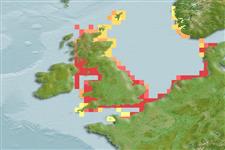Common names from other countries
Classification / Names / Names
Common names | Synonyms | Catalog of Fishes (gen., sp.) | ITIS | CoL | WoRMS
Environment: milieu / climate zone / depth range / distribution range
Ecology
Benthic; catadromous; freshwater; brackish; depth range 0 - 17 m (Ref. 101283). Temperate, preferred 11°C (Ref. 107945); 61°N - 27°N, 14°W - 42°E
Eastern Atlantic and the Mediterranean. Introduced in Baltic and Black Sea.
Length at first maturity / Size / Weight / Age
Maturity: Lm ? range ? - ? cm Max length : 7.0 cm TL male/unsexed; (Ref. 8)
Common in European estuaries. Mostly inhabits freshwater throughout the year but migrates to estuarine brackish waters to reproduce (Ref. 82147).
Life cycle and mating behavior
Maturity | Reproduction | Spawning | Eggs | Fecundity | Larvae
Inhabits freshwater but migrates o estuarine brackish waters to reproduce. The development of the whole larval stage takes place in mid estuarine waters (Ref. 82147); juveniles migrates back to freshwater (Ref. 82145).
Grabowski, M. 2006. (Ref. 2756)
IUCN Red List Status (Ref. 130435)
CITES status (Ref. 108899)
Not Evaluated
Not Evaluated
Human uses
Fisheries: commercial; bait: occasionally
FAO - Fisheries: landings | FishSource | Sea Around Us
Tools
Internet sources
Estimates based on models
Preferred temperature
(Ref.
115969): 10.6 - 12.5, mean 11.5 (based on 86 cells).
Resilience
High, minimum population doubling time less than 15 months (K=0.51-0.62).
